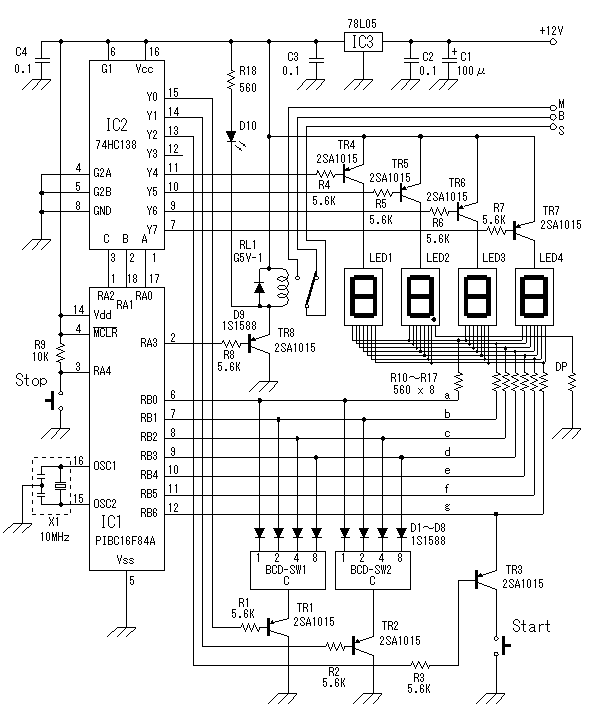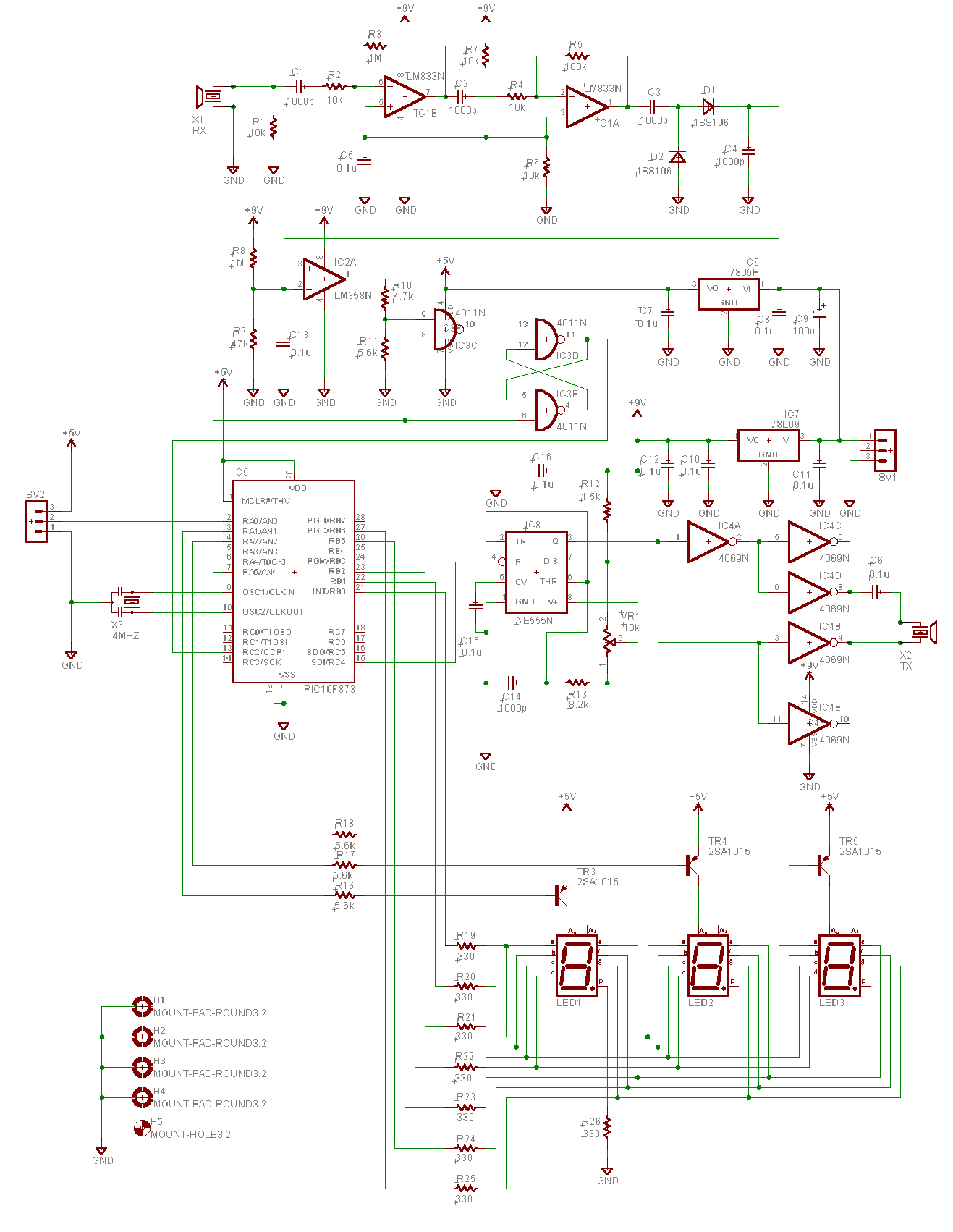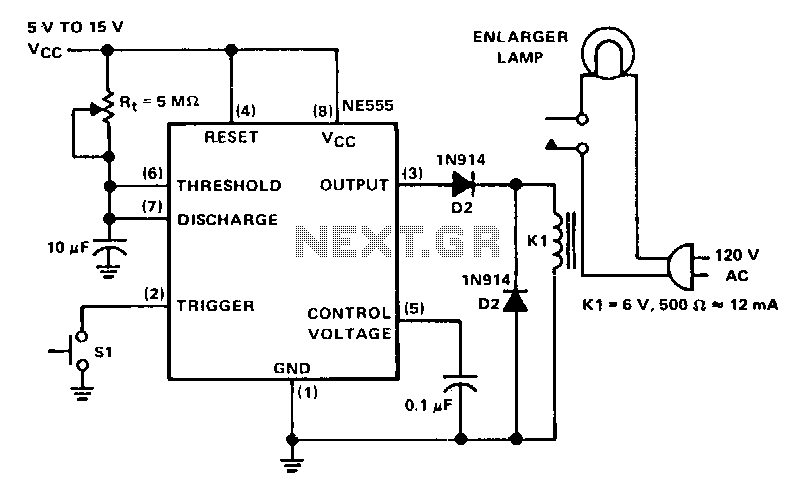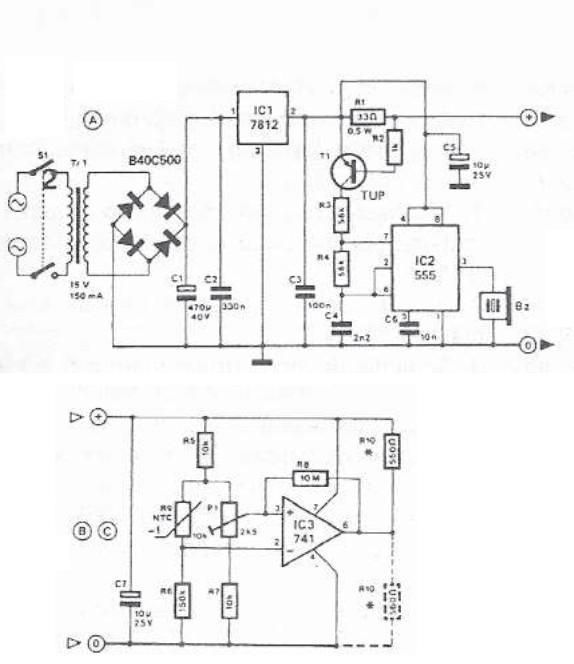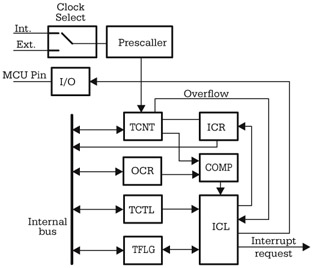
wide range timer

A wide range auto turn-off timer covering 1 minute to 20 hours in three ranges.
The auto turn-off timer is designed to provide a versatile timing solution that can be set across a broad spectrum, from a minimum of 1 minute to a maximum of 20 hours. This functionality is particularly useful in applications where devices need to be automatically powered down after a specified duration to conserve energy or ensure safety.
The timer circuit typically includes a microcontroller or a dedicated timer IC that can be programmed to count down from the selected time interval. It may feature three distinct ranges, allowing the user to select the desired timing range easily. For instance, the first range could cover 1 minute to 1 hour, the second range from 1 hour to 10 hours, and the third range from 10 hours to 20 hours. This segmentation enhances usability by providing clear options for different applications.
The timer can be equipped with a user interface that may consist of buttons or a rotary switch to select the time duration. An LED display or a series of indicator lights can be incorporated to provide visual feedback on the selected time and the countdown status. Additionally, an audible alarm may be included to signal the end of the countdown period.
Power supply considerations are also essential; the timer can operate on a low-voltage DC supply, ensuring safety and compatibility with various devices. The circuit may include a relay or a solid-state switch that activates or deactivates the connected load once the timer reaches zero.
In terms of implementation, the timer circuit can be designed with various components such as resistors, capacitors, and diodes to ensure stable operation. The choice of components will depend on the specific requirements of the application, including the load type and the desired accuracy of the timing function.
Overall, this auto turn-off timer is a practical solution for automating the shutdown of devices, thereby enhancing energy efficiency and operational safety across a wide range of applications.A wide range auto turn OFF timer covering 1 minute to 20 hours in three ranges.. 🔗 External reference
The auto turn-off timer is designed to provide a versatile timing solution that can be set across a broad spectrum, from a minimum of 1 minute to a maximum of 20 hours. This functionality is particularly useful in applications where devices need to be automatically powered down after a specified duration to conserve energy or ensure safety.
The timer circuit typically includes a microcontroller or a dedicated timer IC that can be programmed to count down from the selected time interval. It may feature three distinct ranges, allowing the user to select the desired timing range easily. For instance, the first range could cover 1 minute to 1 hour, the second range from 1 hour to 10 hours, and the third range from 10 hours to 20 hours. This segmentation enhances usability by providing clear options for different applications.
The timer can be equipped with a user interface that may consist of buttons or a rotary switch to select the time duration. An LED display or a series of indicator lights can be incorporated to provide visual feedback on the selected time and the countdown status. Additionally, an audible alarm may be included to signal the end of the countdown period.
Power supply considerations are also essential; the timer can operate on a low-voltage DC supply, ensuring safety and compatibility with various devices. The circuit may include a relay or a solid-state switch that activates or deactivates the connected load once the timer reaches zero.
In terms of implementation, the timer circuit can be designed with various components such as resistors, capacitors, and diodes to ensure stable operation. The choice of components will depend on the specific requirements of the application, including the load type and the desired accuracy of the timing function.
Overall, this auto turn-off timer is a practical solution for automating the shutdown of devices, thereby enhancing energy efficiency and operational safety across a wide range of applications.A wide range auto turn OFF timer covering 1 minute to 20 hours in three ranges.. 🔗 External reference
